Taking Stock, Looking Forward: The 2023 University of Saskatchewan
General Academic Assembly 2023 State of the University Address
By Peter StoicheffThe GAA is an opportunity, legislated in the University of Saskatchewan Act, for the president to deliver a state-of-the-university address. Each of the previous seven I have given had a unique theme, including connectivity, diversity, creativity, visionary change, our role in meeting the COVID-19 challenge, and the post-pandemic university. In each I have tried as well to give a snapshot of the significant advances the university has made over the previous year.
The University of Saskatchewan’s stories are important to tell, full of extraordinary achievement and impact. These stories are created by many people, including those in this room and watching this address, and by those who have come before us in service to this great university and the province it’s named after. These stories help us see to the horizon and beyond it. I’m struck by just how much has been accomplished despite the many challenges we’ve faced together. We continue to contribute to some of the greatest causes of our time, and we are a beacon of hope and possibility for so many.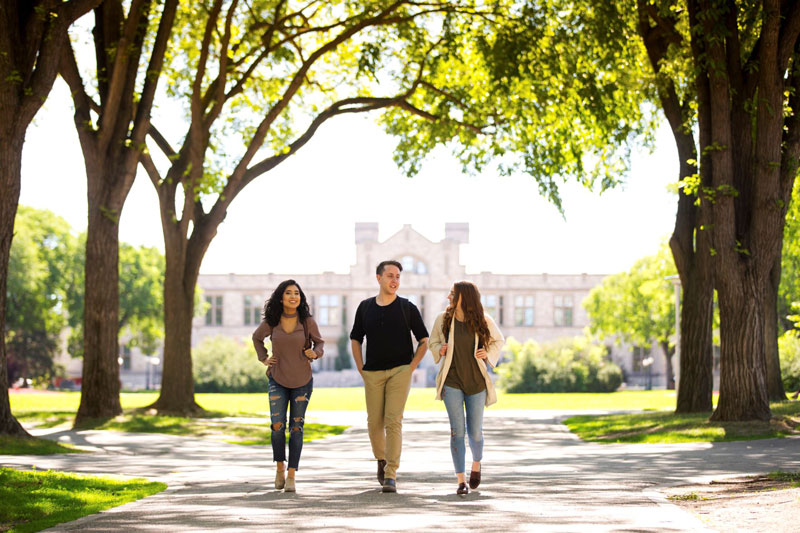
I have been saying for a while now that universities are needed more than they have ever been, and that the University of Saskatchewan is needed more than it has ever been. When I first started saying it, some were skeptical. Aren’t there many other sectors that are more important than they have ever been, and don’t they far outreach ours? Aren’t there global challenges that other sectors are better positioned to solve than ours?
My answer is that not one of those challenges can be addressed in the absence of universities such as ours. Governments can’t do it alone. Nor can any other sector. University graduates will be the leaders of those conversations and solutions. University faculty and students will be the researchers who contribute to their solutions. That’s why I am inspired daily by the invocation to “be the university the world needs.” It’s the right call to action for our time; it shows that our mission is to be engaged; and that we understand the importance of the great opportunity we’ve been handed, every one of us, to make a positive difference in the world. So I use this year’s GAA address to take stock of our recent progress in becoming the university the world needs.
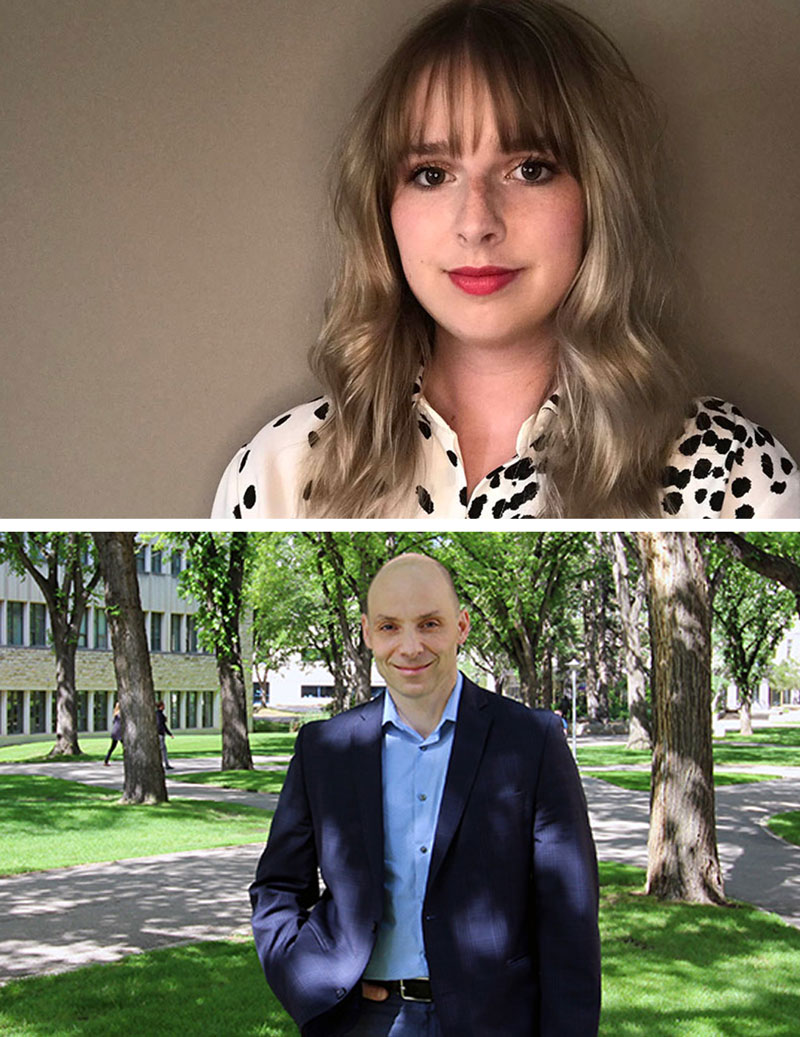
How do we assess our impact in this regard? Perhaps by awards and recognitions. If so, let’s acknowledge over the last academic year alone the 3M National Teaching Fellowship, one of the most prestigious national teaching awards in Canada, and the 10th to faculty at our university; the Vanier Canada Graduate Scholarships received by students studying here; the Rhodes Scholarship (our 73rd); the many Order of Canada recognitions conferred by Rideau Hall to faculty and alumni; the Governor General’s History Award for Scholarly Research; the Fulbright Research Awards to our students; the Banting Postdoctoral Fellowships to attract and retain top-tier talent in Canada; faculty member inductions into the Saskatchewan Agricultural Hall of Fame, or the “2022 Influential Women in Canadian Agriculture”; the naming of a College of Medicine alumnus as president of the Canadian Medical Association; the invitation of our faculty to speak at the COP27 United Nations Climate Change Conference in Egypt in November and at the United Nations Water Conference last month; of our provost to speak at the UN Food and Agriculture meetings in Rome, and the UN Permanent Forum on Indigenous issues in New York; the invitation of our VP Research to be part of the recent influential Bouchard Advisory Panel on the Federal Research Support System; the honouring of five faculty with top provincial health awards and another with the “excellence in medical leadership” award.
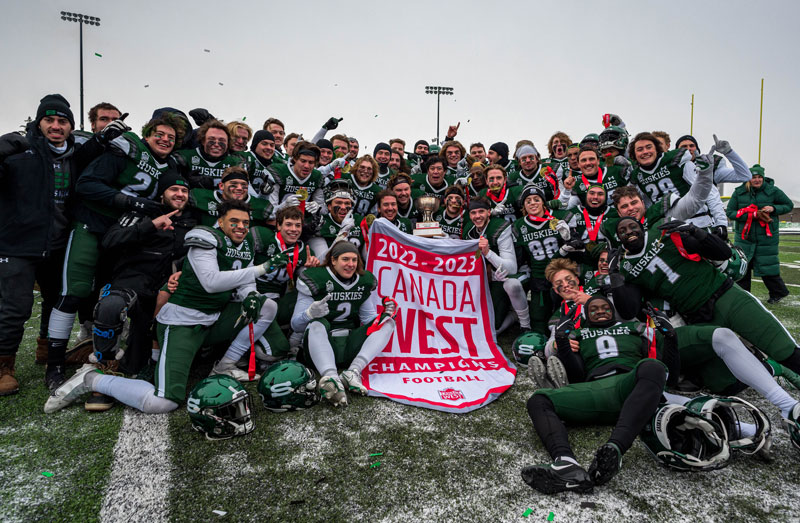
And our Huskies student-athletes and coaching staff continue to impress, with top-ranked academic accomplishments, athletic records and accolades, including two consecutive Vanier Cup appearances, bronze in the Canada West Track and Field Championships, and the decision to host the Canadian Women’s Hockey Championship here next year. That list is only a start. (Which leads me to say that today marks the fifth anniversary of the Humboldt Broncos tragedy, and that exactly five years ago we gathered in this hall to mourn.)
To assess our impact, we can also look at world rankings. We placed 58th out of more than 1,400 universities worldwide assessed by 2022 Times Higher Education (THE) University Impact rankings that measure our success in advancing the UN’s SDGs. The 58th place ranking is a jump of 38 spots from our impressive 96th position in both 2020 and 2021, and is particularly noteworthy since nearly 300 additional universities joined the THE’s overall assessment process for 2022. If we want to assess our impact, global impact rankings are a good place to start.
We achieved our best-ever subject rankings in the latest Times Higher Education (THE) World University Rankings by Subject. For the first time, we placed in the top 500 in all 11 broad subject areas, and saw improvements in many of those categories as well, including in the humanities, education and law, while not dropping in any category.
The Shanghai Rankings placed us in the top 100 worldwide in water resources (first in Canada and 23rd globally), veterinary sciences (fourth in Canada, 51st-75th globally), and environmental science and engineering (sixth in Canada and 76th-100th globally).
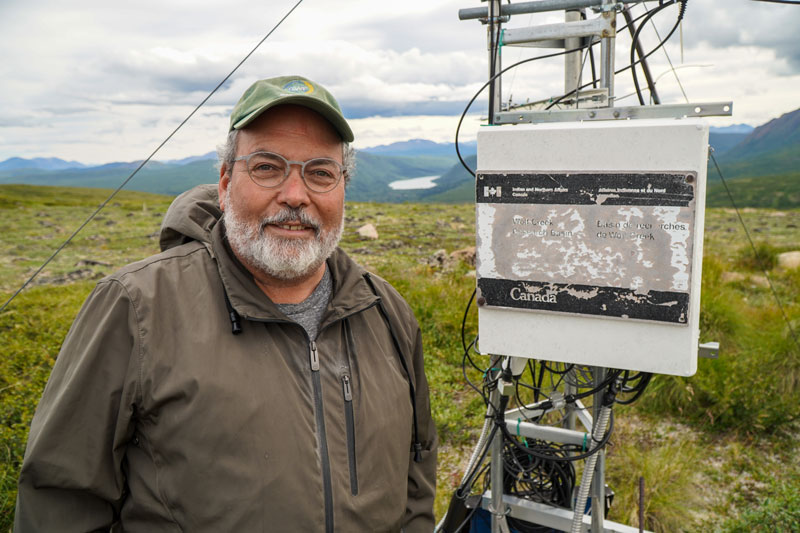
The other major international subject ranking is the QS. There, released two weeks ago, we are in the top 100 in the world in two areas (veterinary science and agriculture). For the first time we received a top-500 ranking in three categories in one year, and several other single-subjects were in the top 500.
Rankings aren’t just points of pride for making speeches. Students from around the world who aspire to study in Canada scrutinize them as they decide where to apply to study. This is in part why we have students from over 130 countries worldwide studying here and why our international student numbers grew by 6.2 per cent this year. Institutional and subject ranking success promotes the development of partnerships with universities throughout the world for the benefit of our researchers and our students. Rankings also support our students who aspire to study at excellent universities elsewhere in the world after graduating from here. For these reasons, we must continue to improve in them.
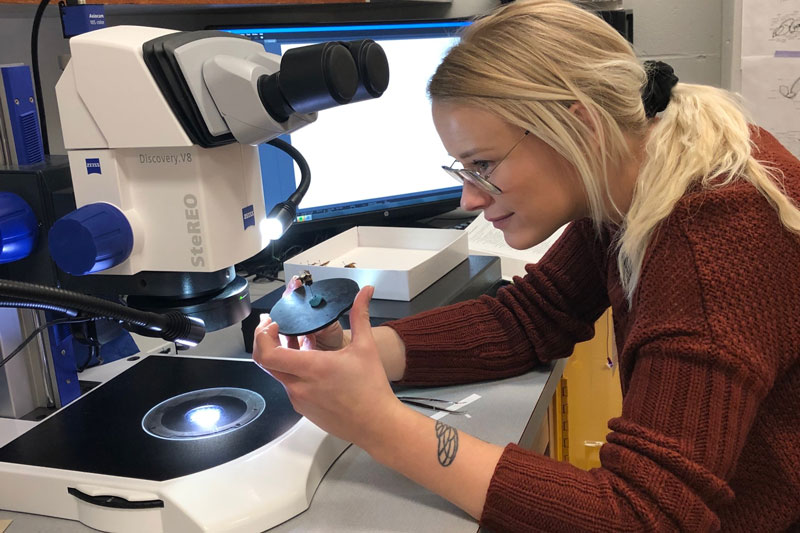
Or we can look at our research income over the last year. In the annual Statistics Canada results announced recently, collated by Research Infosource, we had our highest-ever placement in the rankings: 10th among the 50 universities ranked – and the largest percentage increase of all medical-doctoral universities in Canada.
Examples of the research support that is continuing this upward trajectory for us over the past year alone include funding for research on carbon sequestration, and other agriculture-related support to address complex challenges faced by the agriculture and agri-food sectors.
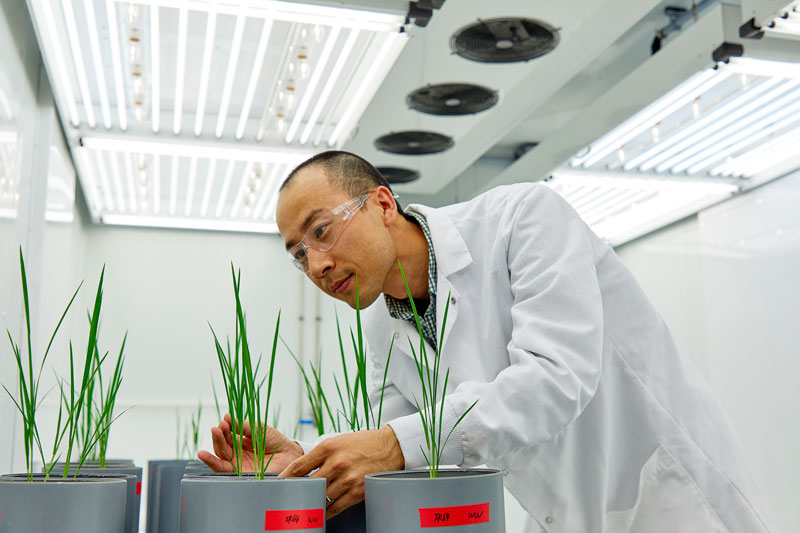
An ecology research team has received Tri-Council funding for an interdisciplinary project to study environmental changes in Western Canada’s Boreal Plains. Our faculty have received funding to address Indigenous-specific racism in Canadian academies. Others will be working alongside Inuit artists to explore the power of traditional storytelling practices. Others the food security of Afghanistan households. Others to support the ground-penetrating radar and oral history research at four Saskatchewan First Nations. Yet others received funding to address the systemic biases that challenge Indigenous youth sports activities.
Our faculty have been funded to improve rapid diagnostic testing for bovine respiratory disease; to study carbon sequestration to mitigate climate change; to undertake patient-oriented research; and to develop the world’s first bison genome biobank. Our researchers are also funded to study the potential for recycled materials to be used to build durable roads in climates with significant temperature swings between seasons. If successful, this research will reduce potholes in cold climates!
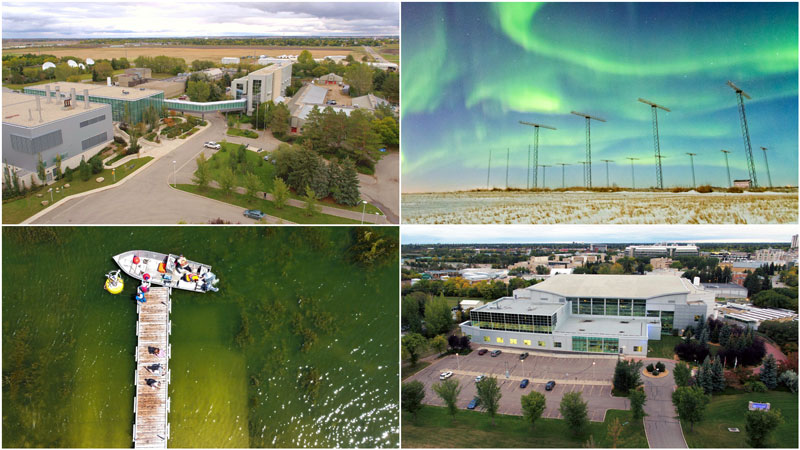
The Canada Foundation for Innovation Major Science Initiatives (or MSI) program, available to all 97 universities in the country, this past year awarded 25 per cent of its entire budget to this university alone, to keep Canada at the forefront internationally in vaccine development, imaging science, sustainable water management and space weather monitoring. That is extraordinary success. No other university in the country can say anything close to that.
But the funding brought in isn’t the only story – just a condition that enables it. The primary story is what our faculty and students and post-docs have been doing over the past year alone in terms of research, scholarly and artistic work activity, partly as a result of that funding.
Canada is the only G-7 nation that does not have a national school food program, and our researchers are partnering with community agencies to inform federal decision-making on a nationally harmonized school food program. Our researchers are creating a digital archive of provincial residents’ experience with the COVID-19 pandemic to ensure that their stories and material can prepare the province to better cope with future health crises.
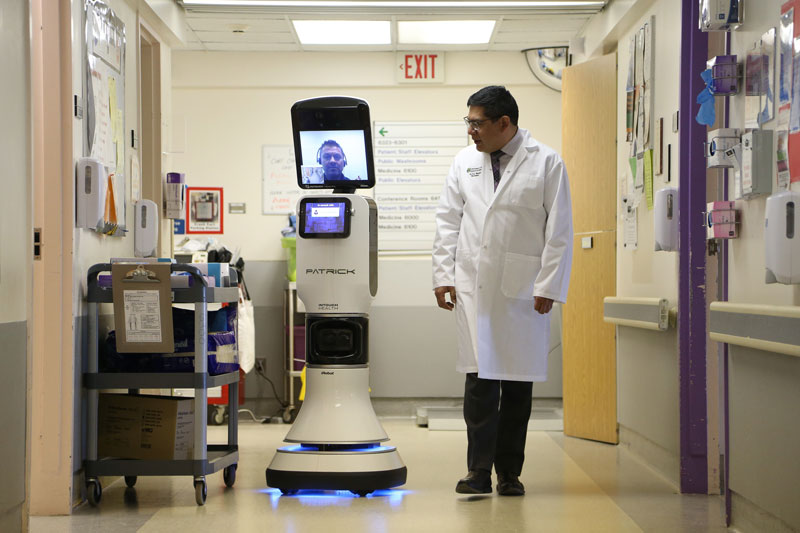
Our researchers are helping the province develop a long-term strategy for delivering health services remotely; researching the mental health of new immigrant youth in Regina; and playing a critical role in a new national, patient-driven network addressing the challenges of heart failure which disproportionally impacts Indigenous peoples. Our Multiple Sclerosis research is very promising, as are our cancer research and rheumatoid arthritis work. We are examining how genetic mutations and immune systems are linked to blood cancers, and we’re undertaking cutting-edge imaging that is yielding new insights into strokes. Our Alzheimer’s research is breaking extraordinary new ground. VIDO is well on its way to becoming Canada’s Centre for Pandemic Research, with construction of the manufacturing facility completed, and funding received in November to establish the Level 4 containment capacity.

A new report led by University of Saskatchewan researchers reveals how industry practices are driving critical threats to global freshwater systems, including groundwater depletion, metal contamination, plastic pollution, and water diversion. A research team has developed an innovative biodegradable product with potential to mitigate plastic pollution around the world.
Our researchers are leading a national team of 13 Canadian universities to develop three new climate science satellite instruments that will be launched into space as part of a large NASA mission. Its purpose is to deliver key data for improved forecasts of weather, air quality, and climate. And as global temperatures rise, wildfires are becoming more common. A new study by USask hydrology researchers found that exposure to wildfire smoke causes glaciers to melt faster.
We are the only university in Canada to have an entire quartet of instruments (two violins, a viola and a cello) made by the Amati family over 400 years ago – some of the finest string instruments found anywhere. This is thanks to the generosity and vision of Saskatchewan farmer Stephen Kolbinson who collected them for decades – a uniquely Saskatchewan story. This year has seen a first-of-its kind series here, featuring these extraordinary instruments in four concert collaborations with some of Canada’s best players.
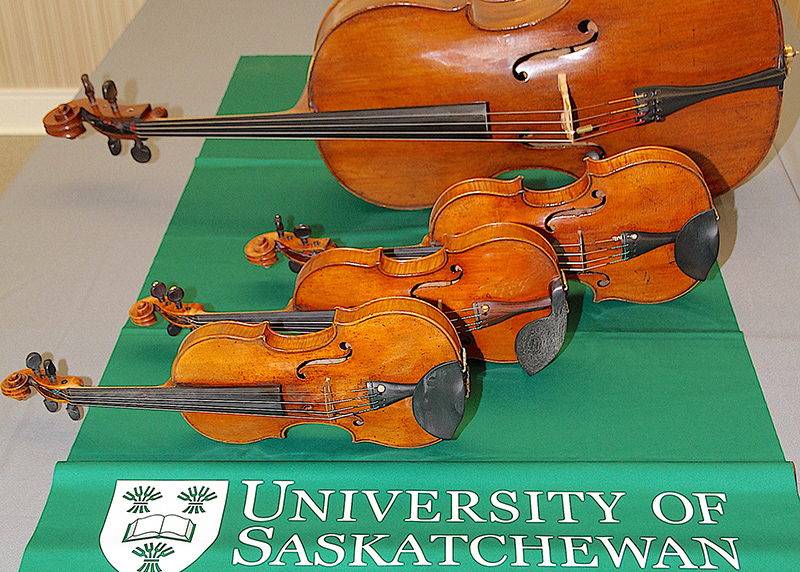
Greystone student theatre has completed another superb season of performances directed by our faculty. Our Greystone Singers choir, also faculty-directed, has given many public concerts this year to large and packed venues, and is so good it has been selected to perform in June of 2024 in Carnegie Hall.
In 2017 we signed a first-of-its-kind agreement between a major university and a Canadian city, resulting in the Research Junction collaboration that supports the development of joint research projects to address contemporary urban issues for the benefit of Saskatoon residents. Adopting this year’s research findings would add more renewable energy to the city’s power grid, improve the removal of petrochemical contaminants from river water, reduce homelessness among 2SLGBTQ+ youth, and revamp Saskatoon’s business tax incentive policies.
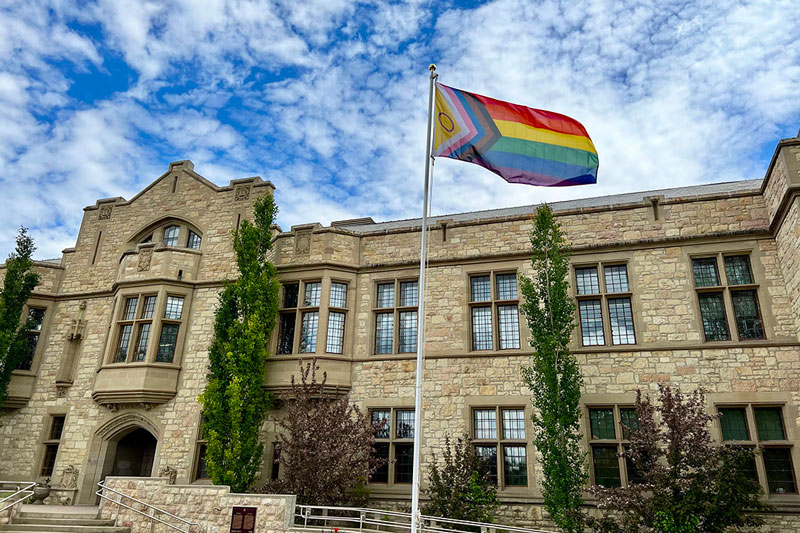
That’s an incomplete list of this year’s research, scholarly and artistic work activity. But the story it tells is that our research is well-supported, ongoing, deeply engaged with local and universal challenges, and globally competitive.
Our RSAW, and our Signature Areas, are now interwoven with our Sustainability Strategy and with the UN Sustainable Development Goals. This past year saw our inaugural cohort of six Sustainability Faculty Fellows from five different colleges, each finding new ways to implement elements of sustainability within their curricula, equipping students – tomorrow’s world leaders – to build a more sustainable future. We have defined what we mean by sustainability competencies for our learners. We launched a project last summer that collects an international team of researchers and partners from Canada, Germany and South Africa to mentor emerging sustainability scholars and practitioners.

We continue to find ways to decrease our GHG emissions in the near term. We have made sustainability a priority through our resource allocation decisions – the Horizon Fund has supported key activities within the strategy, and we have a sustainability revolving fund to support renovation projects that produce utility savings.
These are some of the reasons why we ranked 58th out of 1400 universities in the global THE Impact rankings. It has always been clear to me that sustainability is not the work of one office or unit, but something that every campus community member, in every sector of the university, can commit and contribute to – so I thank you today for the work you have done thus far and for your continued support of this important strategy.
What of our commitment to Reconciliation? There too, we’ve done a lot; and there is much more to do. I still believe that our best work in this crucial area will result from the right mixture of patience and impatience. Sadly, fall term began amidst tragedy, as we paused and mourned the tragic acts of violence that occurred at the James Smith Cree Nation and the village of Weldon at the beginning of September. We offered support to students, staff, and faculty who have connections to James Smith Cree Nation, and the Gordon Oakes Red Bear Student Centre served as a safe gathering space for members of the campus community.
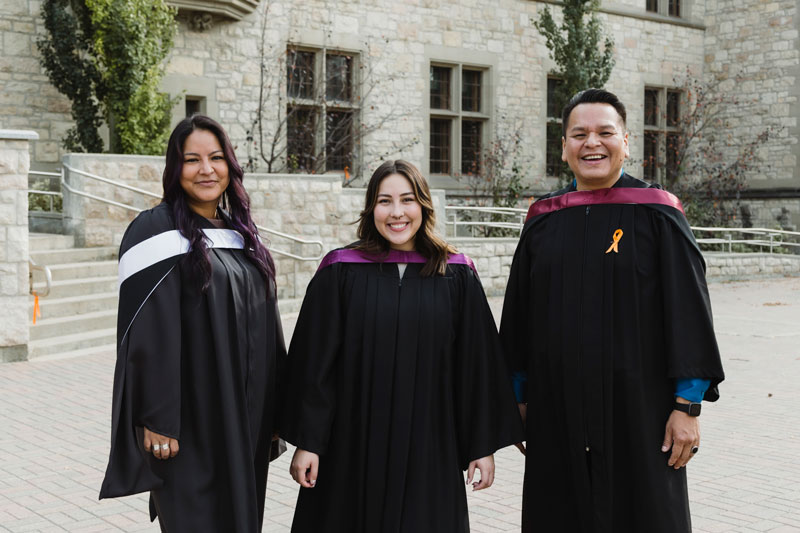
Our self-identified Indigenous student enrolments continue to rise at the graduate level. Undergraduate numbers have not been as positive during and since the pandemic, but much work is being done to reverse that recent trend. An area with significant improvement compared to the fall is first to second year Indigenous undergraduate student retention: a jump of 30 per cent, from 63 to 92 per cent. Our research, scholarly, and artistic work with Indigenous communities continues to increase in importance and impact. Three Canada Research Chairs have recently been awarded here in Indigenous areas.
Our Prince Albert campus, opened in-person this past fall with a well-attended event, continues to see almost half of its students self-identify as Indigenous. The campus will be transformative for the many aspiring students in more remote northern communities who otherwise experience barriers to post-secondary opportunities.
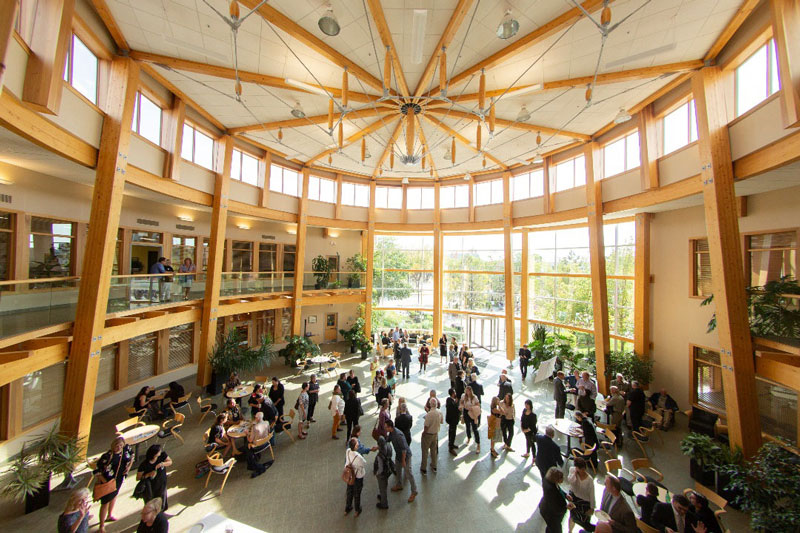
Most importantly, this past year saw the release of the Deybwewin Indigenous Truth Policy – the first of its kind in Canada, approved by our Board of Governors last July. The work has been led by our Office of the Vice-Provost Indigenous Engagement and by an Indigenous task force comprising Indigenous Elders, leaders and Knowledge Keepers and supported by an internal advisory circle of university representatives.
The task force began its policy development work in January 2022. It included delegates from Métis Nation–Saskatchewan, the FSIN, Saskatoon Tribal Council, Prince Albert Grand Council, and the Office of the Treaty Commissioner. We commissioned and shared publicly an independent report by Indigenous rights expert Jean Teillet that has contributed immensely to the national conversation and informed the university’s continued implementation of policies and practices around the issue of people who falsely claim to be Indigenous.
Just last month, the implementation strategy for the Deybwewin policy was released, again the result of engagement and time and energy and commitment by our Indigenous supporters and community colleagues. Why? Because they believe what we are doing is important for the futures of Indigenous peoples and their communities.
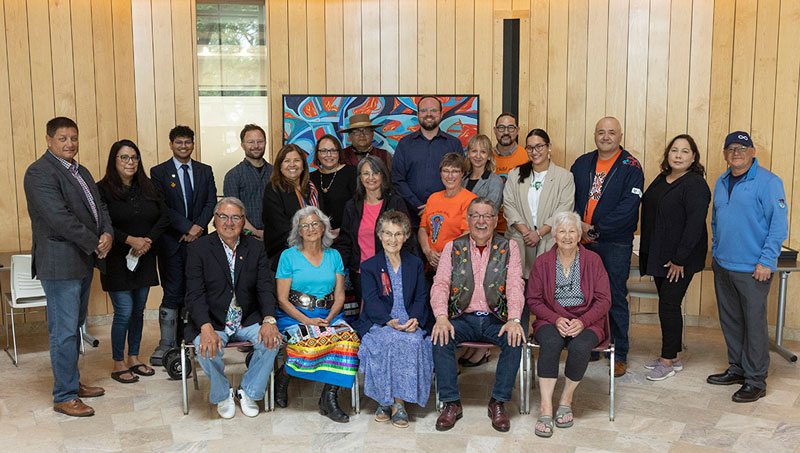
Our policy and its implementation strategy lead the nation in perhaps the most meaningful and important Indigenous-centred work of today. It is widely recognized for what it is – groundbreaking, necessary, timely, respectful, consultative, and courageous. It leads me to say again that we continue to be participants and leaders, not bystanders, in the greatest cultural opportunity this country has ever faced.
Each of these advances – in recognitions and awards; in rankings; in research, scholarly and artistic work and funding for it; in sustainability; in Reconciliation – speaks to how we are moving confidently in the direction of being locally and globally engaged, in having a positive impact on what the world needs. With each of these successes, we continue to make excellence and impact our priorities. With the progress we are making on Reconciliation, we are shifting the culture from isolated locations in the university where Indigenization was acknowledged, to every level and sector across the institution.
The same can be said for our sustainability achievements. We’ve moved from seeing sustainability as the purview of an office in facilities to a commitment that spans our academic programming, our RSAW and our UN SDG progress through our Climate Charter and our Sustainability Strategy. RSAW with impact, progress on the UN SDGs, leadership in Reconciliation – these are opportunities the world needs us to seize. We’re doing so, and we must continue to improve in each of them. What else can we identify that this university is uniquely situated and designed to drive and contribute to?
Let’s start by taking stock of the province we’re named after and serve, and the country we play an influential role in moving forward. Almost half of Canada’s arable land is here, some of which is the most productive in the world. We’re a global leader in the production of canola, lentils and other pulse crops.

With 30 percent of global potash production, we’re the largest producer of potash in the world. The global population is facing food insecurity, and this province and this university are at the heart of the answer to that challenge. Agriculture is one of our Signature Areas, but the challenge spans many of our strengths, from computer science to public policy, to engineering, to business, to nutrition, to public health, to veterinary medicine, to our Global Institute for Food Security and more.
Saskatchewan has the largest high-grade uranium deposits in the world and produces one-quarter of the world’s uranium supply at a time when fossil fuels and power sources have to evolve. We may well have more than 10 percent of the world’s rare earth mineral deposits at a time when they are imperative to the production of new technologies the world depends upon. This province and this university can contribute to answering that challenge as well, carefully, sustainably and responsibly. Energy and Minerals for a Sustainable Future is one of our Signature Areas.
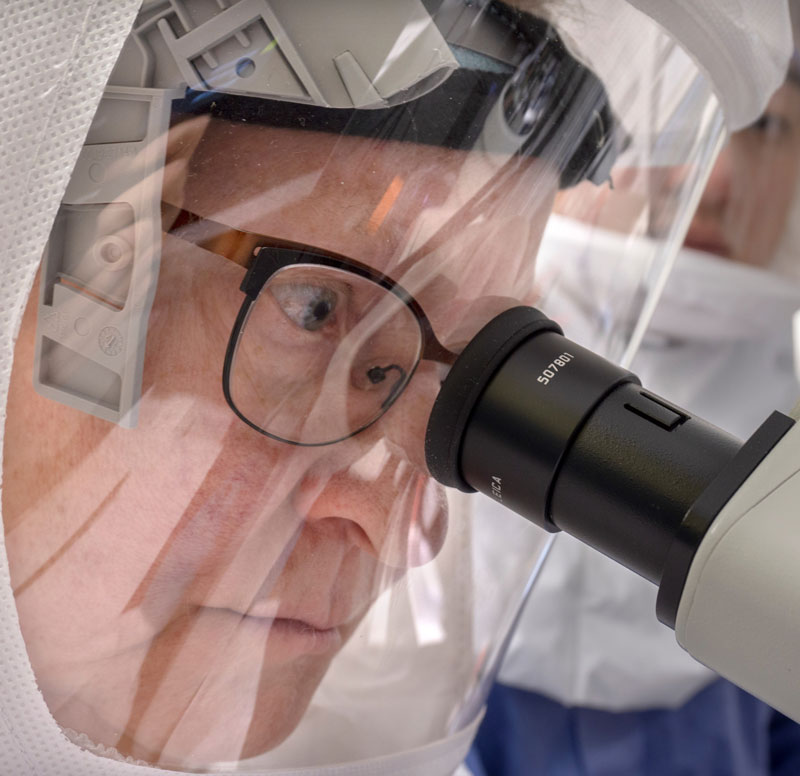
Closer to home, Saskatoon remains the second-fastest growing IT hub in Canada. Many of the country’s fastest-growing companies are located here, according to the Globe and Mail. Almost all of them were started by our graduates, and primarily employ our graduates. Many successful companies have emerged from this university – Skip the Dishes, SED Systems, International Road Dynamics, Pic-a-Tic, Seven Shifts, Vendasta, Solido – to name a few. Venture capital investment in Saskatoon and region has been increasing faster than any other location on this continent. We sit beside, and have a partnership with, one of the continent’s largest research parks, Innovation Place.
We opened our first start-up incubator, OPUS, two months ago, to provide aspiring entrepreneurs from here with the tools needed to build successful ventures on campus. Our Global Institute for Food Security now houses an Agtech IP Portal that helps identify and advance Intellectual Property developed at GIFS, and an Ideas Portal for governments, academia and industry that have partnership proposals.
We have the largest science infrastructure of any university in this country.
We are leaders in the One Health area, thanks to an unparalleled congregation of health sciences units and labs, at a time when the world faces a multitude of health-related challenges. We have an enviable strength in humanities, social sciences, fine arts, public policy, public health, law, environmental programming and research, business and education. And that’s just the beginning of a survey of our formidable academic capacity, supported by world-class researchers and students we now attract from over 130 countries around the world, to support innovation and entrepreneurship. No wonder we have reversed the talent out-migration of previous decades that saw our graduates leave the province in large numbers. Now, the majority stay here.

Still, Canada’s innovation strength as a whole has yet to reach its potential. Perhaps it is because the country is blessed with an abundance of natural resources and we don’t experience the imperative of innovation the way other nations do who lack them. Canada performs poorly on the rankings devoted to measuring innovation globally. Crucially, the countries that rank highest – South Korea, Israel, Germany and Sweden among them – have universities that play a distinct role in their national innovation ecosystems (and have nowhere near the natural resources we enjoy). Our university has a key part to play in changing Canada’s story. Our province and our country have the need, and we have the capacity, the infrastructure and the talent.

The majority of the C100 leaders – of companies started by Canadians in Silicon Valley – earned humanities degrees at university. We can show how innovation complements sustainability, RSAW and Reconciliation. Done correctly, it supports each of these, and each supports Innovation. Another opportunity before us is the soon-to-be-launched Be What the World Needs Comprehensive Campaign – the largest in this university’s and this province’s history. Philanthropy and innovation, approached strategically, also go hand-in-hand.
Innovation and entrepreneurship call us, if we aspire to be the university the world needs. So do Equity, Diversity and Inclusion. Here too we’re progressing well but need to do more. In my statement on anti-racism and its call to action in June of 2020 I committed all senior leaders – vice-presidents, deans, executive directors – to engage in anti-racism/anti-oppression education. Dr. Verna St. Denis and Ms. Liz Duret and their team have been providing education and training to approximately 45 members of our Senior Leadership Forum and to the President’s Executive Committee. This has been a tremendous, uplifting process, involving hard work, introspection and deliberate action, and it will continue. We have signed the Scarborough Charter that aims to address anti-Black racism, and now have a Provost’s Advisory Committee tasked with designing its implementation. We’ve vastly increased our Black History Month activity.
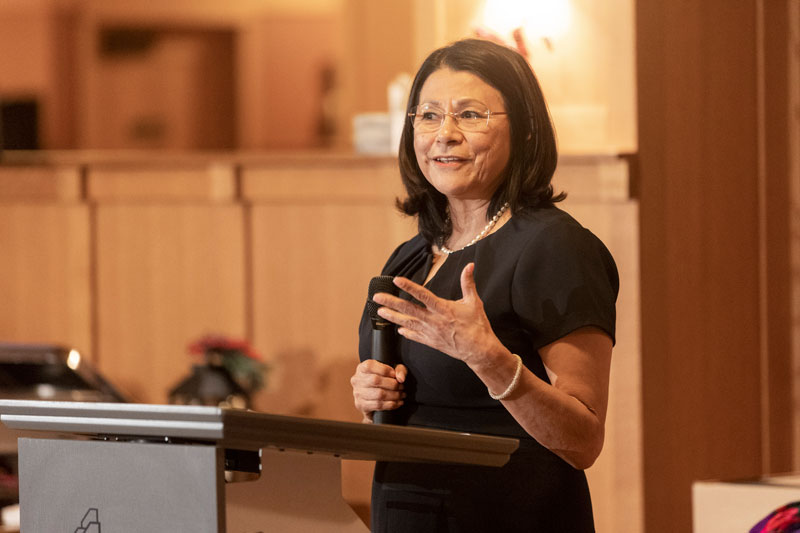
Our three collegial bodies have adopted an EDI Policy to support the university community in bringing to life the principles of diversity, equality, human dignity, and manācihitowin, and reflecting them back in our daily interactions and decisions. It states that “all members of the university community are expected to understand equity, diversity, and inclusion and are responsible for the implementation of such within their scope of influence and authority.”

It has remained for us to bring forward an implementation framework for that policy to give it life at every level of the university, in every academic unit, in every office, and in every building. That implementation framework will be in front of our Senate in just over two week’s time, and in front of Council and then the Board before the end of June. I urge you, as I do regarding innovation and entrepreneurship, to consider how to achieve that strategy from the perspective of your role in the university. At this time in our history, and at this time in human history, failure to do so is not an option for a university aspiring to be one the world needs.
Colleagues – we’ve set our sights very high at this university. We deserve to look at the horizon and beyond. We deserve to see the positive impact we’re having on a world that needs us more than ever. Are we doing enough on all these fronts? By no means. Our important work never stops. Do we have a clarity of vision as to where we need to go, and what we need to focus on? Yes we do. I thank you for your countless contributions to this university and, by extension, to the world we serve.
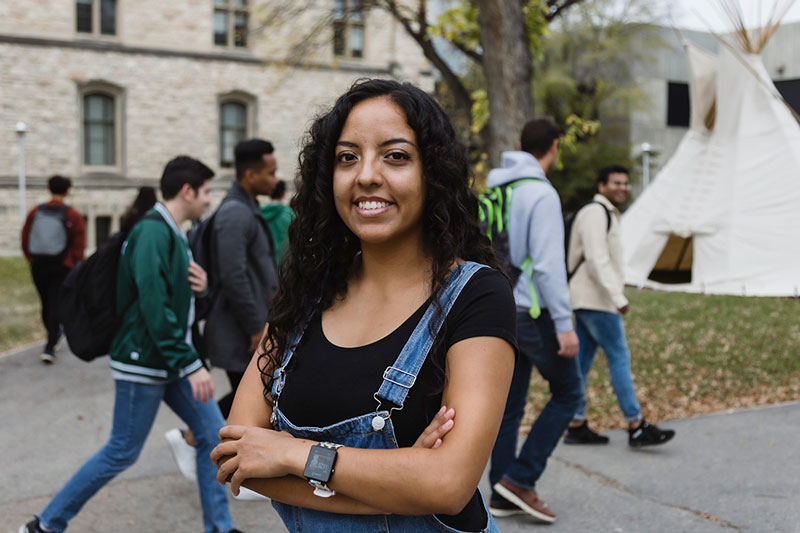
Article re-posted on .
View original article.

